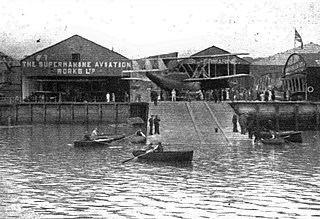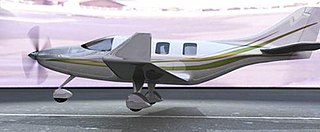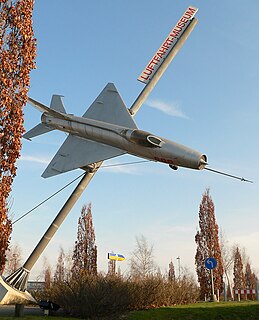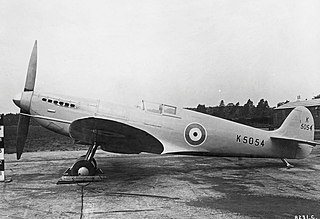
Supermarine was a British aircraft manufacturer that is most famous for producing the Spitfire fighter plane during World War II as well as a range of seaplanes and flying boats, and a series of jet-powered fighter aircraft after World War II. The company had successes in the Schneider Trophy for seaplanes, with three wins in a row of 1927, 1929 and 1931.

The Supermarine Seafire is a naval version of the Supermarine Spitfire adapted for operation from aircraft carriers. It was analogous in concept to the Hawker Sea Hurricane, a navalised version of the Spitfire's stablemate, the Hawker Hurricane. The name Seafire was derived from the abbreviation of the longer name Sea Spitfire.

The British Supermarine Spitfire was facing several challenges by mid-1942. The debut of the formidable Focke-Wulf Fw 190 in late 1941 had caused problems for RAF fighter squadrons flying the latest Spitfire Mk Vb. Rolls-Royce engineers were already working on a new version of the Merlin incorporating a two-stage supercharger; the combination of the improved Merlin and the Spitfire Mk Vc airframe in a "stop-gap" design allowed the RAF to combat the Fw 190 on equal terms.

In a fixed-wing aircraft, the spar is often the main structural member of the wing, running spanwise at right angles to the fuselage. The spar carries flight loads and the weight of the wings while on the ground. Other structural and forming members such as ribs may be attached to the spar or spars, with stressed skin construction also sharing the loads where it is used. There may be more than one spar in a wing or none at all. However, where a single spar carries most of the force, it is known as the main spar.

The Supermarine Southampton was a flying boat of the interwar period designed and produced by the British aircraft manufacturer Supermarine. It was one of the most successful flying boats of the era.

The Isaacs Spitfire is a single seat homebuilt sporting aircraft design created by John O. Isaacs, a former Supermarine employee and retired schoolmaster and designer of the Isaacs Fury, as a 6/10th scale replica of a Supermarine Spitfire. Its first flight was on 5 May 1975.
Cunliffe-Owen Aircraft was a British aircraft manufacturer of the World War II era. They were primarily a repair and overhaul shop, but also a construction shop for other companies' designs, notably the Supermarine Seafire. The company also undertook contract work for the Air Ministry, Lord Rootes, Shorts and Armstrong Siddeley worth £1.5 million. After the war, however, the company began to face financial difficulties and in February 1947 a request to Midland Bank to extend the company's overdraft was refused. In November of that year it became necessary to suspend production of the Concordia aircraft – upon which all the company's future hopes rested – and its financial collapse became inevitable.

The British Supermarine Spitfire was the only Allied fighter aircraft of the Second World War to fight in front line service from the beginnings of the conflict, in September 1939, through to the end in August 1945. Post-war, the Spitfire's service career continued into the 1950s. The basic airframe proved to be extremely adaptable, capable of taking far more powerful engines and far greater loads than its original role as a short-range interceptor had called for. This would lead to 19 marks of Spitfire and 52 sub-variants being produced throughout the Second World War, and beyond. The many changes were made in order to fulfil Royal Air Force requirements and to successfully engage in combat with ever-improving enemy aircraft. With the death of the original designer, Reginald J. Mitchell, in June 1937, all variants of the Spitfire were designed by his replacement, Joseph Smith, and a team of engineers and draftsmen.

The Isaacs Fury is a British homebuilt sporting biplane designed by John Isaacs as a seven-tenths scale replica of the Hawker Fury fighter.
The Jurca MJ-10 Spitfire is a sport aircraft designed by Marcel Jurca in France as a replica of the Supermarine Spitfire and marketed for homebuilding. Plans for two versions were produced, the MJ-10, at 3/4 scale, and the MJ-100, at full-scale. Construction throughout is of wood, and the builder may choose to complete the aircraft with either a single seat or two seats in tandem. The version represented is the Mk.IX Spitfire, but allowances are made to allow the builder to portray other versions, in particular the Mk.Vc and the Mk.XIV. Additionally, the MJ-100 version may be built with a fuselage structure of welded steel tube if desired. Plans for both versions were marketed by Falconar and later Jurca Plans West.

The Supermarine Aircraft Spitfire is an Australian homebuilt aircraft produced in kit form by Supermarine Aircraft. A replica of the famous British Supermarine Spitfire World War II fighter, it was originally produced to 75% scale. Subsequent models have increased the scale of the fuselage and added a second seat.

The Rolls-Royce Griffon engine was designed in answer to Royal Naval specifications for an engine capable of generating good power at low altitudes. Concepts for adapting the Spitfire to take the new engine had begun as far back as October 1939; Joseph Smith felt that "The good big 'un will eventually beat the good little 'un." and Ernest Hives of Rolls-Royce thought that the Griffon would be "a second power string for the Spitfire". The first of the Griffon-engined Spitfires flew on 27 November 1941.

Solent Sky is an aviation museum in Southampton, Hampshire, previously known as Southampton Hall of Aviation.

The Supermarine Spitfire is a British single-seat fighter aircraft that was used by the Royal Air Force and other Allied countries before, during, and after World War II. Many variants of the Spitfire were built, using several wing configurations. It was also the only British fighter produced continuously throughout the war. The Spitfire continues to be popular among enthusiasts; around 70 remain airworthy, and many more are static exhibits in aviation museums throughout the world.

The Aviation Heritage Museum is a museum created and maintained by the RAAF Association of Western Australia. It houses many military and civilian aircraft, aircraft replicas and aircraft engines, of types that have served in the Royal Australian Air Force or have relevance to aviation in Western Australia. It is located in the suburb of Bull Creek in Perth, Western Australia.

The Australian Lightwing SP-6000 was an Australian kit aircraft under development by Australian Lightwing of Ballina, New South Wales. The aircraft was intended to be supplied as a kit for amateur construction.

The Slepcev Storch is a Serbian type-certified, kit and ultralight STOL aircraft, designed by Yugoslavian-Australian Nestor Slepcev and currently produced by Storch Aircraft Serbia in several different versions. The ultralight version is a 3/4 scale replica of the Fieseler Fi 156 Storch of the Second World War and is supplied as a kit for amateur construction or as a complete ready-to-fly-aircraft.

The Aviation Museum Hannover-Laatzen is a permanent exhibition in Laatzen of the history of aviation. 38 airplanes, 800 aircraft models, and more than 30 aircraft engines are displayed on 3.500 m².

The Supermarine Spitfire was developed in the mid-1930s as a short-range, high-performance interceptor aircraft by chief designer R. J. Mitchell.

















